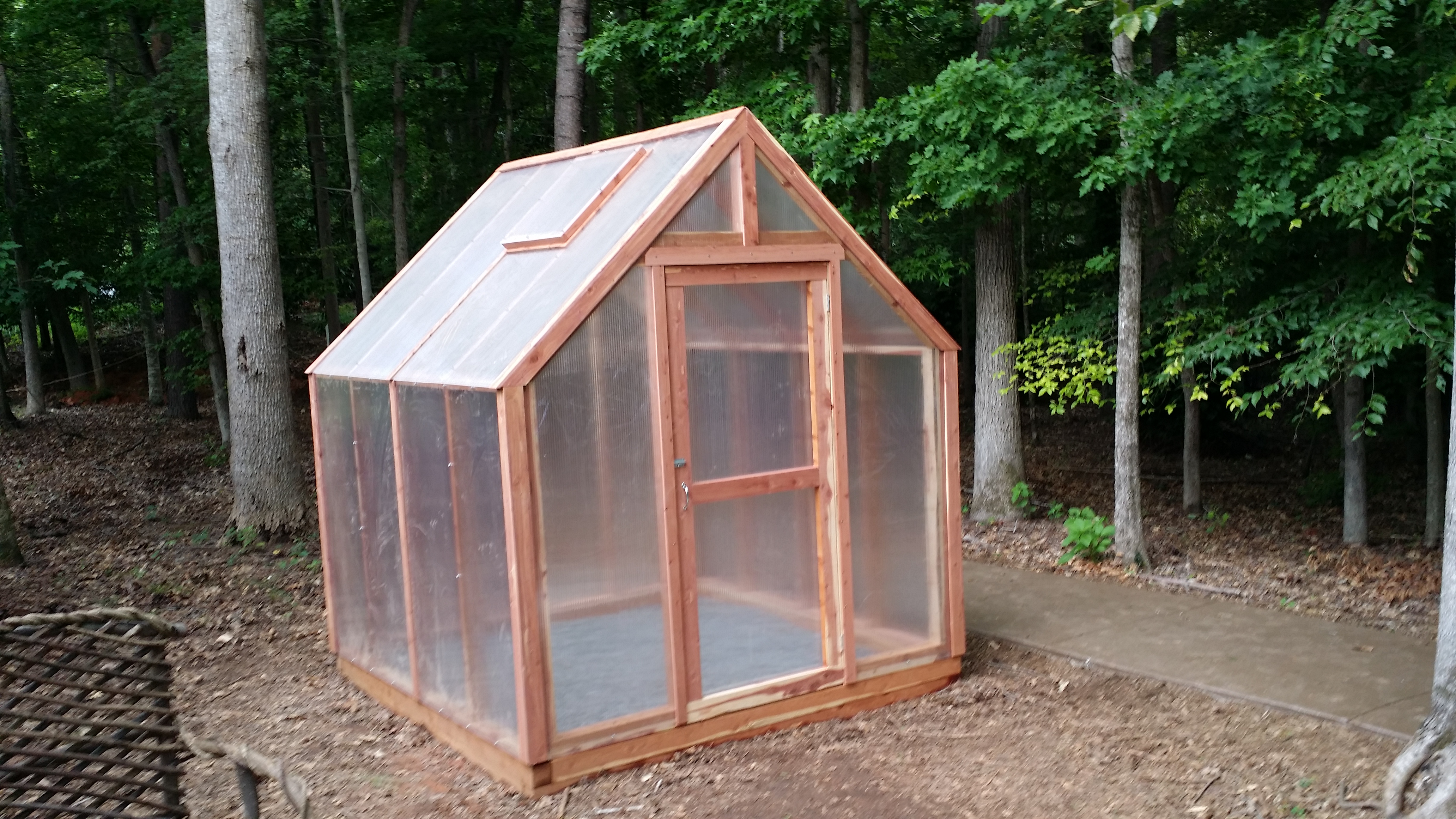Choose the Ideal Site for Your Greenhouse
 Tuesday, November 13, 2018 at 4:54PM
Tuesday, November 13, 2018 at 4:54PM 
You can already picture a battalion of sprouted seedlings on sturdy cedar shelves. Automated vent windows pull fresh air past your smiling face through the cedar framed structure and supplemental lighting clicks on at dusk exactly as programmed. Tools and supplies are neatly stowed below a smartly designed potting station.
But have you selected the best location for your greenhouse?
Choosing the right site for your greenhouse is an important initial step, and considering these factors before committing to a site will help ensure you get the most out of your investment.
Sunlight
Perhaps the most important factor in choosing a greenhouse site is the amount of direct sunlight the area receives. Most non-commercial, backyard greenhouses are used primarily from late fall until early spring, where a south-facing site with no obstructions and maximum winter sun exposure is ideal. Often an ideal greenhouse site is near a tree or even in the shade of a tree, which isn’t a problem provided that the tree is deciduous and will shed it’s leaves during the part of the year you’ll be using the greenhouse. In fact, shade in the summer can be a welcome relief from the punishing effects of intense heat, and help extend the life of the structure, and even make it bearable for use as a storage and workspace. Consider carefully, however, the shadow cast by permanent structures nearby, like buildings and fences. And remember that a completely glazed greenhouse design will increase the amount of available light versus designs with glazing only on the south facing side.
Wind
Try to avoid placing your greenhouse in a windy location, like an exposed hill top, which can cool the structure, increasing the cost of supplemental heat. High wind loads also place additional strain on the structure’s frame. If this is simply unavoidable, you can reduce the effects of wind by planting a hedgerow that will function as a windbreak between the prevailing winds and the greenhouse. A sturdy evergreen like the Emerald Green Arborvitae is an excellent, fast-growing variety for the Southeastern US, that will provide year-round relief from high winds. Remember to plan for eventual growth, and allow plenty of space between the greenhouse and what your new hedgerow might look like in 10-15 years. Fifteen to Twenty feet between the hedgerow and greenhouse wall is usually about right.
Other Considerations
In order to maintain a healthy grow environment, It’s important for a greenhouse to have good drainage. Avoid low lying locations that stay soggy, and if this isn’t possible, decide on the type of flooring, and on the design and location of a drainage system before construction begins. Another drawback to low-lying areas is the effect of frost pockets - areas where cold air pools and settles - which can lower the temperature in the greenhouse. Grade the area if necessary to allow cold air to drain away from the site, or choose another location.
Also, consider carefully how convenient a prospective greenhouse site is to water and power sources, and outdoor garden areas. Even if you don’t plan to install permanent plumbing and electrical outlets inside the structure, if you can’t picture yourself lugging a hose out to the site, or ferrying plants and supplies there and back, then it’s probably to far away.








Reader Comments